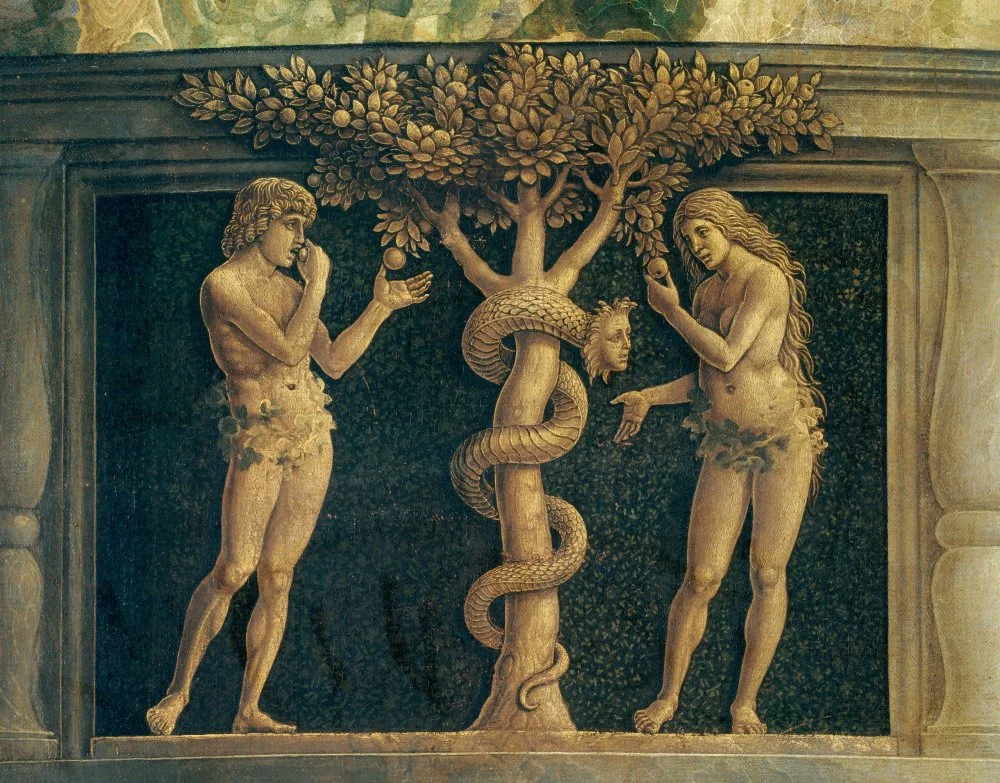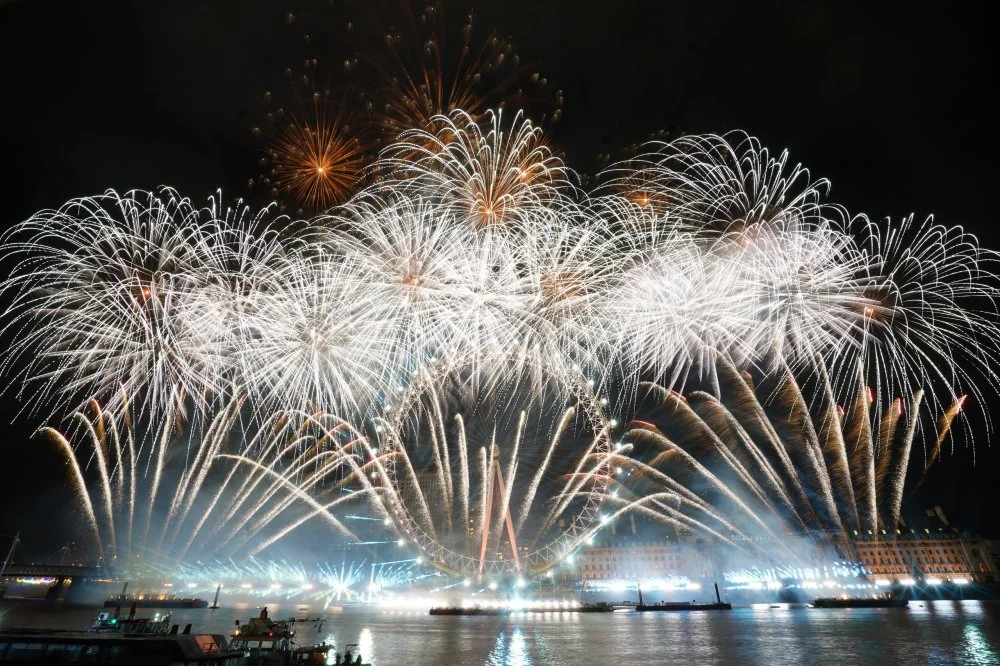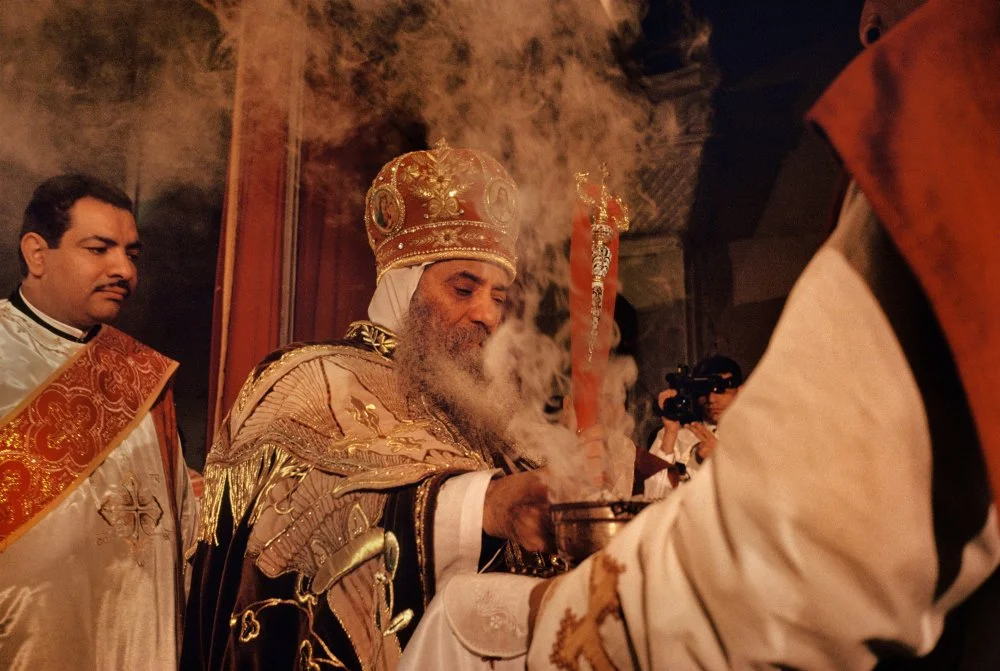
Victorian Christmas card/Buyenlarge/Getty Images
When is the right time to set up the Christmas tree? Why is the New Year called Sylvester? Who created the Advent calendar? Our New Year piece tells you why.
Sometimes, a disagreement can take place over, of all things, a tree. Why, you ask? Well, sometimes, it just happens! For example, the argument may be about whether a Christmas tree should still be up on New Year's Eve. Or there are debates about whether it is our custom or a foreign one, whether it is okay to cut down a live tree or better to have a plastic one. You may argue about whether it is ethically and environmentally responsible to add plastic to our already littered world, or if we should even look for alternatives. These are weighty issues to be sure, requiring careful deliberation. So let me share what I have discovered during my years of living in Europe, specifically in Germany. However, do note, dear reader, I will not deal with ethics and ecology, wood and plastic, I will only talk about the intangible, about customs, and I will start with the Christmas tree.
Much of our knowledge comes to us empirically through practical things, and my own experiences have taught me that. Approximately fifteen years ago, I decided to put up a Christmas tree a few days before the New Year. Being a practical person, I decided to do it at this time so that the needles would not fall off soon and that it would last until the Old New Year (or Orthodox New Year) on 13 January. But it turned out that on 27 December, all Christmas tree markets were closed. There were no Christmas trees, nowhere to find them—except in a garbage dump. You see, Christmas trees in Germany are put up (not by everyone) a couple of weeks before Christmas, which is celebrated over two days, 25–26 December, and some people throw them away immediately after the holiday. So the Christmas tree and New Year's Eve are different traditions. After setting up a Christmas tree that year (we asked for one at the garden center and they dug one up, already packed in a container to be sent for recycling), I delved into the topic.
In a time where encyclopedic knowledge is available on handheld devices and through websites like Google and Wikipedia, the answers to all kinds of questions are readily available at your fingertips. For instance, discovering the origins of the New Year's (Christmas) tree is as simple as a quick search. The roots of the tradition are German. The first unconfirmed reference dates back to the sixteenth century, the second, already documented, to the seventeenth century, to Strasbourg. Its original significance harks back to Adam and Eve, the Tree of Paradise and the Apple of Knowledge (24 December was the Day of the Ancestors).

Mantegna Andrea. "Temptation of Adam and Eve crunching the apple" Louvre museum, Paris/Getty Images
The Christmas Tree
And in European winters, there were few evergreen trees available, only conifers and holly, and only apples for fruit. The tree was placed in a church or a similar public place, and later, gingerbread and nuts were hung on the tree. After the service, the tree was ‘shaken’ and the candy was collected. The first Christmas trees were placed in the homes of wealthy Protestants, and gradually the custom spread to Catholics. In England, the Christmas tree appeared only in the first half of the nineteenth century and even later in the Russian Empire.
Of course, the information found on Google and Wikipedia sometimes oversimplifies everything. So I went to the library and poked around for more details. And soon, the situation became more complicated. At the beginning of the nineteenth century, during the Napoleonic Wars, Catholics began to put up Christmas trees as a symbol of protest against the French occupiers. It is interesting to note that the Christmas tree came to North America in the eighteenth century (as per the first mention of one in the continent), and the tradition became widespread during the War of Independence because of soldiers from Hesse in Germany. It was from America that the Christmas tree was brought to Italy, the most Catholic country in Europe, as late as after the Second World War, thanks to the efforts of American soldiers.
Do you think the Catholic Church fathers were happy with the Christmas tree becoming a practice? Of course they were not! The symbol of Catholic Christmas is the crèche, an object installation depicting Mary and Joseph, a baby in a stable, animals and the Three Wise Men. But it was hard to resist (or control!), and they had to work hard to assimilate this new symbolism. Even today, Christian theologians, while recognizing the common mythological context—the Tree of the World—that is present in almost every religion in the world, emphasize the Christian symbolism. The Christmas tree is also the Tree of Paradise where the Fall occurred, and it is also the Cross. And so, no synthetic materials, the Church Fathers strictly instructed, and no plastic Christmas trees in the house—everything must be authentic!

Franz Kruger. Before Christmas. 1754/Getty Images
The Advent Calendar
Okay, we’ve now sorted out one custom and learned how to buy and decorate a Christmas tree. But now the children are growing up and want to actively participate in the holidays. That's how Advent (the month of waiting for Christmas), the Advent calendar, and the Advent wreath came to be. I had to turn to Wikipedia again and research a new custom, one that was even younger than the Christmas tree. In the mid-nineteenth century, the director of a Protestant orphanage came up with a new way to teach children the idea of waiting for the birth of the baby Jesus. This method was meant to teach them to concentrate, or, as modern psychologists would say, to be more mindful. He placed twenty-four candles on a wheel and each day, he lit a new one. Once again, the Protestants had come up with a new innovation! The Catholics soon adopted the rite, and now everyone weaves wreaths and lights candles. But only four, according to the number of Sundays of Advent, the month of waiting for Christmas. And, of course, Christian theologians once again tried to convince everyone that neither the wreath, nor the symbolism of the colors (green and red), nor the flame of the candles had the slightest relation to pagan prehistory, to pre-Christian Europe.
What, then, is the story about New Year’s Eve? Is it really not celebrated in Germany after Christmas? Well, of course it is celebrated loudly and with fireworks (which feature less and less because ethicists and environmentalists have intervened again), and until the eighteenth century, with shooting firearms (then the firemen intervened). But it is known by a different name—Sylvester, after Pope Sylvester I, who died on 31 December in distant 335 CE. The beginning of the new calendar year was moved at the same time as the introduction of the Gregorian calendar in 1582 (we can't get ahead without stories and dates!). Today, in addition to fireworks at midnight, there are parties with sparkling wine, gifts of cut flowers, mascots in the form of a pig, a chimney sweep, a four-leaf clover, and a fly agaric. The pig indicates prosperity; the chimney sweep means good luck, which is logical with all the New Year's Eve fireworks; the four-leaf clover means good luck; and the fly agaric—well, scholars disagree on the meaning of this symbol.

Victoria Jones. Fireworks over central London. 2024/Getty Images
Mistletoe
For a few years, I managed to find my way among the rituals in a foreign country. Then it became more difficult: we moved to a village in the mountains, far away from the big cities. In Europe, the farther away you are from urban centers, the higher up in the mountains, the more peculiar and mysterious traditions get, the more layers in the cultural ‘pie’ of time you find, the thinner the transparent line between paganism, superstition, Christianity, and the Hollywood version of modern urban rituals becomes.
I wasn’t particularly surprised by the horseshoes on the walls of the garage. But when I saw the discolored broom of a plant above my head in the basement, I began to feel uneasy. I later found out that it was mistletoe, a sacred Celtic plant cut by Druids in ancient times during sacred rituals and sacrifices. Mistletoe protects your home from evil spirits. It would probably be necessary to replace your old bouquet with a new one, and these branches are sold every year at Christmas and New Year’s Eve, but I haven’t looked into this tradition yet. Incidentally, as a symbol of security, we display the blessings of carolers above the entrance to our home. These carolers, children dressed up as the Magi and carrying a star, partake in the tradition of going from house to house on Epiphany day, singing and gathering donations. In return, the donor receives a sticker featuring a code made up of the initial letters of the Magi's names and the year.

Christmas magazine cover. Girl with mistletoe. 1910s /Getty Images
Smoky Nights
It was here in this village that I learned that 1 January, the beginning of the new calendar year, falls at a terrible time, the time of ‘smoky nights’, a period of twelve nights when evil crawls out of every crack, when you must do the right thing, lest you be damned. And it’s not that easy! But one must first explain what these twelve strange nights are and where this story comes from. Modern pagans, easily found in Europe today, account for it like this. There are two types of years: the lunar year, comprising 12 months of 29.5 days, totaling 354 days; and the solar year, with 365 (or 366) days. The difference between the two is those strange days and nights, but there is no fixed connection to the calendar. Some say this period lasts from Christmas Eve to Epiphany, from 24 December to 6 January, others are convinced that it starts earlier, on the day of the winter solstice (22 December), then there is a break for Christmas, then it goes on until 2 January. But everyone agrees on one thing: be careful! Danger lurks around every corner, especially at night. That is why it is so important to gather together in the bright light, to eat, drink, play, sing—in a phrase, to live—against all the evil of the other world.
Rituals and Bans
Visiting other homes and eating there is easy. But what is difficult is not being able to do laundry, especially on New Year’s Eve. You see, another belief goes that everything has to be dried, ironed and hidden in the closet before then! I don’t believe in ghosts, but it has somehow just worked out that I now regularly do a huge load of laundry on the eve of Christmas, trying to wash every last sock. And the laundry must be taken off the lines first! You can't hang laundry between Christmas and Epiphany because someone will either hang themselves or diseases and evil spirits will ‘stick’ to the wet laundry—in a phrase, hanging laundry is a shroud.
Here, other rituals are much easier to follow for former townspeople. For example, you can’t go to the cattle barn in your underwear, but this only applies to women. Luckily, today, we have no chickens or cattle, especially not in a barn. You can’t spin or weave at this time either—the thread could break, which may be the thread of someone's life. But there are no spinning wheels or looms in our homes.

Adolf Lueben. The engraving "What a mess!"/Alamy
Food
Fortunately, not all of the rituals of this troubled time are of a prohibitive nature. There are many rules that can be followed to emerge from the chaos between the lunar and solar year alive and unharmed. For example, you could cook and eat something special. On Christmas, you should make something that needs to be boiled like rice or noodles. You then have to throw a handful on the street so that you have money. On 31 December, you should cook sauerkraut and eat it at night so that there will be money again the whole next year (well, at least enough for a rainy day, if not a fortune). On New Year’s Eve, one should clean and cook a carp and put one of its scales in one’s purse so that money does not run out during the year. On New Year’s Eve, one should bite off the head of a biscuit fish for health and happiness in the coming year.
Let’s talk a little about the symbolism of some of these rituals. Eating together at a table symbolizes a closed circle, inaccessible to demons. Leftovers from the last meal of the previous year, eaten the next day, mean that one will not go hungry in the new year. The act of throwing rice over the threshold to the tradition of leaving rice milk porridge out for the household deity and cat to eat. The most interesting of all these rites, of course, is the carp, a symbol of fertility, multiplication, and wealth. It’s no wonder that the first spoonful of carp caviar on New Year’s Eve was meant to be eaten by the master of the house. Carp was brought to Europe from the south or it came up the Danube in the Middle Ages. Monks in Europe later learned how to breed carp in ponds, and the fish became very popular. Soon, there were many different recipes for cooking the fish in both northern and southern European cuisines. Among them is a very curious one, reminiscent of the Russian dressed herring called ‘mossy carp’, or carp under green moss. Boiled and cooled fish was covered with a layer of ‘moss’, which was a parsley-decorated mixture of finely chopped egg yolks, onions, shrimps, and cucumbers, with mustard and mayonnaise.
During the gap between the lunar and solar year, people protected themselves from the spirits not only with food, light, and laughter. These nights are called ‘smoke nights’ for a reason. Special mixtures of herbs and resins were used to smoke a person’s house, stable, henhouse, and beehive. To be honest, I have already purchased a special device to burn cleansing mixtures, and I suspect it is called a censer. This will most likely be the next thing I immerse myself into, the next ritual that is alien to me!

Coptic Christmas ceremony. St. Mark's Cathedral, Cairo, Egypt. Reza/Getty Images